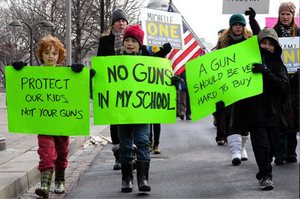School shootingWhy security measures won’t stop school shootings
When deadly school shootings like the one that took place on Valentine’s Day in Broward County, Florida occur, often they are followed by calls for more stringent security measures. While some of these measures seem sensible, overall there is little empirical evidence that such security measures decrease the likelihood of school shootings. Surveillance cameras were powerless to stop the carnage in Columbine and school lock-down policies did not save the children at Sandy Hook. We believe what is missing from the discussion is the idea of an educational response. Current policy responses do not address the fundamental question of why so many mass shootings take place in schools. To answer this question, we need to get to the heart of how students experience school and the meaning that schools have in American life. It is time to think about school shootings not as a problem of security, but also as a problem of education.

Demonstration in response to school shooting // Source: yahoo.com
When deadly school shootings like the one that took place on Valentine’s Day in Broward County, Florida occur, often they are followed by calls for more stringent security measures.
For instance, after the Jan. 23 case in which a 15-year-old student allegedly shot and killed two students and wounded 16 others at a small-town high school in Kentucky, some Kentucky lawmakers called for armed teachers and staff.
If anything, the response of the Kentucky lawmakers represents what has been called the “target-hardening” approach to school shootings. This approach attempts to fortify schools against gun violence through increased security measures. These measures may include metal detectors, lock-down policies, “run, hide, fight” training and surveillance cameras.
While some of these measures seem sensible, overall there is little empirical evidence that such security measures decrease the likelihood of school shootings. Surveillance cameras were powerless to stop the carnage in Columbine and school lock-down policies did not save the children at Sandy Hook.
As researchers who have collaboratively written about school shootings, we believe what is missing from the discussion is the idea of an educational response. Current policy responses do not address the fundamental question of why so many mass shootings take place in schools. To answer this question, we need to get to the heart of how students experience school and the meaning that schools have in American life.
An educational response is important because the “target hardening” approach might actually make things worse by changing students’ experience of schools in ways that suggest violence rather than prevent it.
